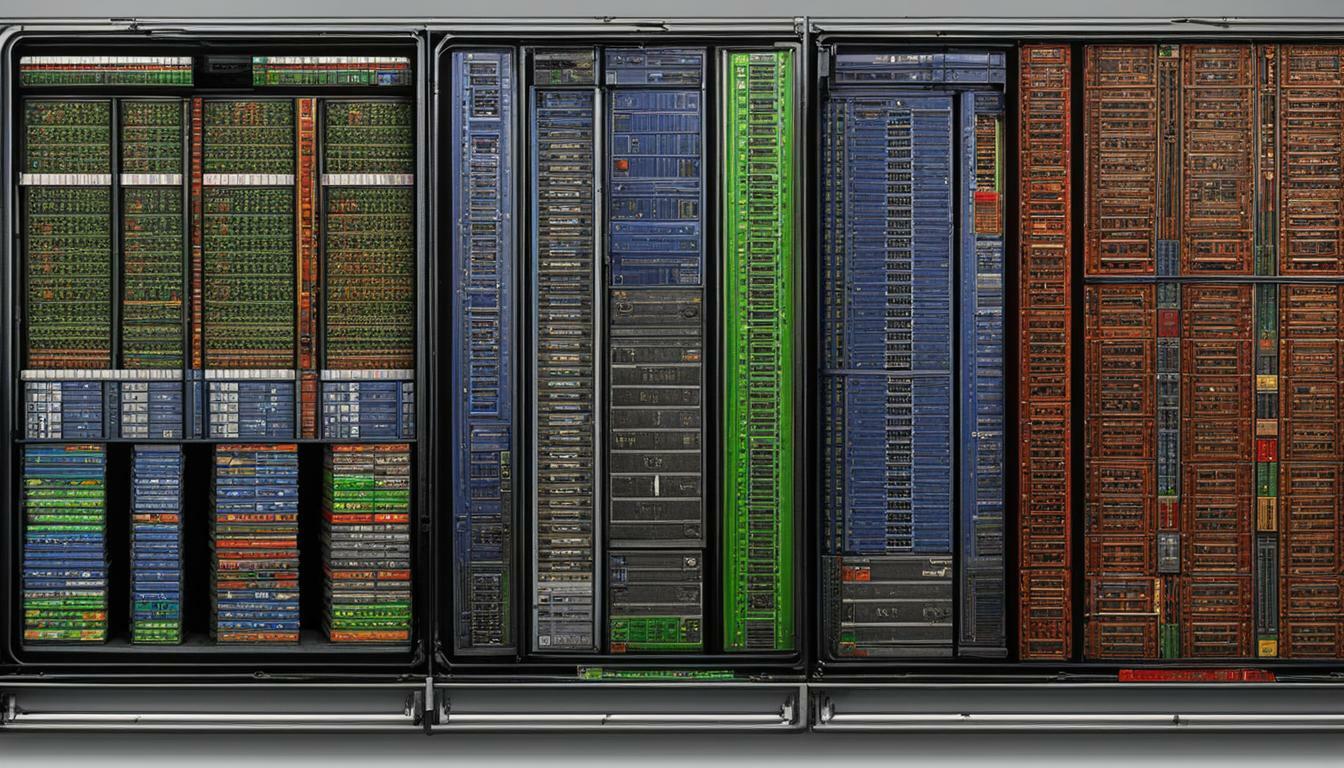Introduction
Databases lie at the very heart of modern technology, playing a crucial role in storing, organizing, and retrieving vast amounts of data. From small-scale applications to enterprise systems, databases provide the foundation for managing information efficiently and securely.
With the exponential growth of data in recent years, it has become increasingly important to understand the different types of databases available and their distinct characteristics. In the realm of databases, two primary types dominate the landscape: relational databases and NoSQL (Not Only SQL) databases.
Each type offers unique features and benefits that cater to specific use cases and requirements. Understanding the differences between these two types is essential for database administrators, developers, and businesses alike when deciding on an appropriate solution for their data management needs.
Brief overview of databases and their importance in modern technology
In our interconnected world where information is generated at an astonishing rate, effective data management has become paramount. Databases provide a structured approach to store and retrieve data efficiently while ensuring its integrity.
By organizing data into tables with predefined schemas, databases enable easy manipulation through various operations such as searching, updating, deleting, and aggregating. Databases serve as central repositories for diverse applications across industries like finance, healthcare, e-commerce, logistics – just to name a few.
They empower organizations with valuable insights derived from large datasets through analysis tools like business intelligence (BI) or machine learning algorithms. Moreover, they facilitate seamless integration between different software systems by acting as intermediaries that handle data exchanges.
Introduction to the two main types of databases: relational and NoSQL
Relational databases have long been considered the traditional model due to their robustness in handling structured data effectively. They employ a tabular structure consisting of rows (tuples) representing individual records or entities within distinct tables with columns (attributes) defining specific attributes or properties associated with those entities.
This structured approach ensures data integrity, consistency, and reliability due to the strict predefined schema enforced. On the other hand, NoSQL databases have emerged as a more flexible and scalable approach to data management.
NoSQL systems diverge from the rigid structure of relational databases by embracing a schema-less or schema-agnostic design. They can handle unstructured or semi-structured data with ease, making them well-suited for scenarios where flexibility and scalability are paramount, such as handling large-scale web applications, big data analytics, or real-time streaming platforms.
In the subsequent sections of this article, we will explore in detail the characteristics that set relational databases apart from NoSQL databases. By delving into their respective strengths and weaknesses, we hope to provide clarity on which type of database is most suitable for specific use cases and assist decision-makers in making informed choices for their data management strategies.
Relational Databases
Definition and Characteristics of Relational Databases:
Relational databases are a widely adopted type of database management system that organizes data into tables with predefined schemas. In this model, data is structured and stored in an organized manner, ensuring consistency and facilitating efficient retrieval and manipulation.
Relational databases rely on the relational model proposed by Edgar F. Codd in 1970, which emphasizes the use of primary keys and foreign keys to establish relationships between tables. This logical structure enables effective data management, as it allows for easy navigation within the database.
Structured Data Storage Using Tables with Predefined Schemas:
One fundamental characteristic of relational databases is their structured data storage approach. Data is organized into tables, where each table represents a specific entity or concept relevant to the database’s domain.
These tables consist of rows (also known as tuples) and columns (attributes), representing individual instances and properties respectively. By employing this tabular structure, relational databases ensure that each piece of data resides in its designated place according to its semantic meaning.
Emphasis on Data Integrity Through the Use of Primary Keys and Foreign Keys:
Maintaining data integrity is crucial for any reliable database system, and relational databases excel in this aspect by utilizing primary keys and foreign keys. A primary key uniquely identifies each record within a table, ensuring its uniqueness throughout the database.
Foreign keys establish relationships between different tables, enabling referential integrity by ensuring that values in one table correspond to valid values in another related table. This mechanism prevents inconsistencies or errors when manipulating or querying related data across multiple tables.
Support for Complex Queries through SQL (Structured Query Language):
Another distinguishing feature of relational databases is their support for complex queries through SQL (Structured Query Language). SQL provides a standardized language for interacting with relational databases, allowing users to define and execute various types of queries.
With SQL, one can retrieve specific data subsets, perform aggregations and calculations, update records, and even join multiple tables together to generate more comprehensive views of the database. The rich set of operations offered by SQL enhances the versatility and analytical capabilities of relational databases, making them a powerful tool for complex data manipulation and analysis.
Key Features that Set Relational Databases Apart from NoSQL Databases:
Relational databases possess several key features that set them apart from NoSQL (Not Only SQL) databases. These features contribute to their robustness, consistency, and reliability when dealing with structured data:
ACID Compliance – Atomicity, Consistency, Isolation, Durability:
ACID compliance is a crucial aspect in maintaining data integrity within relational databases. ACID stands for Atomicity, Consistency, Isolation, and Durability:
– Atomicity ensures that transactions are treated as indivisible units of work; either all the changes within a transaction succeed or none do. – Consistency guarantees that any transaction brings the database from one valid state to another.
– Isolation ensures that concurrently executing transactions do not interfere with each other; they appear to execute sequentially. – Durability ensures that once a transaction successfully commits its changes to the database, those changes are permanent even in the event of system failure.
These principles guarantee reliable transactions by ensuring data consistency throughout the entire process. For instance, if there’s an error during a transaction’s execution or if it gets interrupted midway due to an external factor (e.g., power outage), ACID compliance ensures that no partial or inconsistent updates are applied to the database.
To illustrate this concept further, consider a banking system where transferring funds from one account to another is a common transaction. ACID compliance ensures that the amount is deducted from the source account and credited to the destination account atomically, without allowing any intermediate state where the funds are neither debited nor credited.
Data Normalization – Breaking Down Data into Smaller, Manageable Tables to Minimize Redundancy:
Data normalization is a fundamental technique employed in relational databases to minimize data redundancy and improve efficiency. It involves breaking down complex data structures into smaller, manageable tables.
The goal is to eliminate duplication of data by organizing it logically and minimizing anomalies that may arise from redundant or inconsistent information. Normalization forms, such as First Normal Form (1NF), Second Normal Form (2NF), Third Normal Form (3NF), etc., provide guidelines for achieving optimal database design.
Each normalization form focuses on eliminating specific types of repetitive or redundant data relationships. By adhering to these forms, databases become more flexible, adaptable, and efficient in handling updates and queries.
For instance, consider an e-commerce database where products are associated with multiple orders. Rather than duplicating product information in each order record leading to potential inconsistencies or storage waste, normalization enables the separation of product details into a separate table linked via foreign keys.
This approach minimizes redundancy while maintaining consistent product information across multiple orders. By embracing data normalization techniques and applying appropriate normalization forms based on specific use cases, relational databases achieve greater efficiency in storage utilization while ensuring data consistency throughout their schema.
Schema Enforcement – Strict Adherence to Predefined Schemas for Structured Data Storage:
Relational databases enforce strict adherence to predefined schemas for structured data storage. A schema defines the structure and organization of tables within a database system.
By establishing well-defined schemas ahead of time, relational databases ensure consistency across all records inserted into the database. This approach offers several benefits.
Firstly, schema enforcement ensures that data conforms to the specified structure, preventing accidental or inconsistent data entry. Secondly, it facilitates data integration and interoperability between multiple applications or systems by providing a standardized format for data exchange.
Schemas aid in query optimization by allowing the database engine to make efficient use of indexing and other performance-enhancing techniques specific to the predefined schema. However, challenges can arise when modifying schemas in large-scale relational databases.
Altering an existing schema may require careful planning and coordination, especially when dealing with production systems where changes can have far-reaching consequences. Migrating existing data while preserving its integrity can be a complex task that demands thorough testing and consideration of potential impacts on ongoing operations.
Relational databases offer structured storage using tables with predefined schemas, emphasize data integrity through primary keys and foreign keys relationships, support complex queries through SQL, adhere to ACID compliance for reliable transactions, implement data normalization techniques to minimize redundancy and improve efficiency, as well as enforce strict adherence to predefined schemas for structured data storage while presenting unique challenges when modifying them. These characteristics distinguish relational databases from NoSQL alternatives and contribute to their widespread usage across various domains requiring consistency and reliability in managing structured information.
NoSQL Databases
Definition and Characteristics of NoSQL Databases
NoSQL databases, as the name suggests, deviate from the traditional relational database model by offering a more flexible and dynamic approach to data storage and retrieval. Unlike their structured counterparts, NoSQL databases do not rely on predefined schemas.
This means that developers have the freedom to store data in a variety of formats without having to adhere strictly to a rigid structure. This flexibility makes NoSQL databases an ideal choice when dealing with rapidly evolving data requirements or when handling large amounts of unstructured or semi-structured data.
Flexible Schema Design Allowing for Dynamic Changes
One of the key advantages of NoSQL databases is their ability to accommodate changes in data structure without requiring any predefined schema modifications. This agile schema design allows for seamless evolution as new data types are introduced or existing ones undergo alterations. By eliminating the need for upfront schema definition, developers can save time and effort when implementing changes, making NoSQL databases highly adaptable in dynamic environments.
Distributed Architecture for Scalability and High Availability
NoSQL databases are built on distributed architectures that provide horizontal scalability and high availability. Traditional relational databases often face limitations in scaling vertically due to hardware constraints, whereas NoSQL solutions distribute data across multiple servers or clusters, enabling effortless scaling by adding more nodes.
Furthermore, this distributed nature enhances fault tolerance as multiple replicas are maintained across different servers. Consequently, even if one server fails, another replica can seamlessly take over, ensuring continuous availability of the database.
Support for Unstructured or Semi-Structured Data Types
In addition to their flexibility and scalability advantages, NoSQL databases excel at handling unstructured or semi-structured data types such as JSON (JavaScript Object Notation) or XML (eXtensible Markup Language). These formats allow developers to store and query data that may not fit neatly into the rows and columns of a traditional relational database. With NoSQL, complex hierarchical structures can be stored directly, enabling faster and more effective processing of diverse data types.
Conclusion
NoSQL databases offer a compelling alternative to traditional relational databases by providing flexibility, scalability, and support for unstructured data types. The absence of rigid schemas gives developers the agility to adapt to changing requirements without sacrificing performance or data integrity. The distributed architecture ensures scalability and high availability, making them suitable for handling massive workloads in dynamic environments.
Additionally, NoSQL databases excel at storing unstructured or semi-structured data types efficiently. With their powerful features and adaptability, NoSQL databases are empowering organizations to tackle modern-day challenges with confidence and efficiency – opening up new possibilities in the world of data management.
 Skip to main content
Skip to main content
